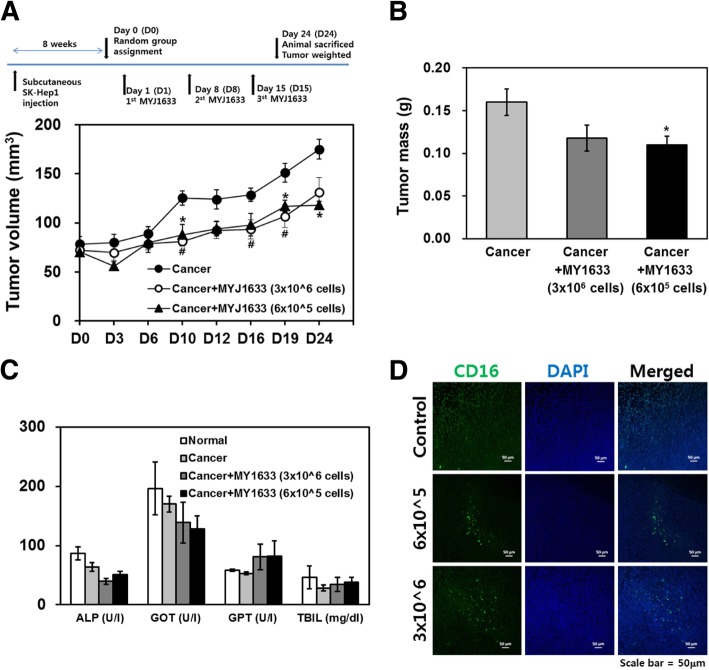Fig. 5.
In vivo anti-tumor effect of MYJ1633 in a xenograft liver cancer animal model (a) The xenograft model was established using SK-hep1. Following random group assignment, the animals received 2 different concentrations of MYJ1633 (every 7 days, a total of 3 times) via tail vein infusion. The volume of tumor (width x width x length / 2) was monitored every 3–4 days for 24 days (n = 5 for each group). The data represented as mean ± SEM. *p < 0.05 and **p < 0.01. b Twenty four day after the group assignment, tumor mass was excised and weighted (n = 5 for each group). The data represented as mean ± SEM. *p < 0.05. c Blood chemistry analyzed at the end of the animal study (n = 5 for each group). ALP: alkaline phosphate, GOT: glutamate oxalacetate transaminase, GPT: glutamate pyruvate transaminase and TBIL: total bilirubin. Unit for each parameter is indicated in parenthesis. The data represented as mean ± SEM. d To identify human NK cells in tumor mass, immunohistochemial staining using human specific CD16 antibodies was conducted. CD16 positive cells were visualized using FITC-conjugated secondary antibodies and the nuclei were stained with DAPI

